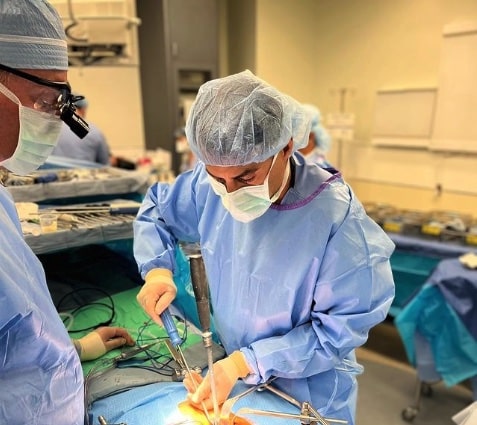You may be one of thousands who suffer from back pain. It is estimated that 6 out of 10 people in the world suffer from pain generating from the spine. In the United States, spinal surgery is one of the three most common surgeries performed.
People often look for alternative treatments offered by your spine surgeon in Newport Beach, CA to remedy their back pain. A good and simple way of treating this is to practice specific yoga positions that are considered a great spine health exercises. Yoga, apart from helping you connect with your inner being, is also an excellent practice for relieving and preventing spinal injury.
There have been numerous studies that set out to test the benefits of yoga. One such study was done by the National Center for Complementary and Alternative Medicine, conducted at the National Institute of Health that tested individuals with chronic lower back pain. The individuals in this study had less lower back pain and improved mobility after 12 weeks of yoga. Even more impressive is that the same individuals in a follow up experiment twenty-six weeks later, had increased function and they experienced less pain. (see reference below)
Below are three different poses that will get you started. A daily routine of the three poses will put you on a path to a healthy spine.
- Child’s pose: Start on your knees, with your backside over your heels. Then slowly move your head to the floor until you make contact with it. It’s important to maintain your arms around your body so you can relax even more. This position stretches your spine and relieves all tension from your neck and your shoulder. It’s recommended to use a pillow on which you can lay your head on. For a modified version, you can place a pillow under your torso.
- Cat pose: Starting from the child’s pose, get up. Stretch your arms and bend your spine upwards. Keep your head down, as if you were trying to touch your stomach with your forehead. Always keep your knees and ankles on the floor. Then, from this position, straighten your spine, leaving it upright. At the same time, lift your head and look forward. Move from one position to another very slowly; it’s important that you accompany all of these with your breathing. Inhale for the first position and exhale for the second one.
- Knee to Chest Pose: Start by laying on your back on a flat surface. When you exhale, bring your knees to your chest. Wrap your arms around your legs holding the position as you use the appropriate breathing methods. This pose stretches the back muscles and relieves pain associated with what some refer to “knots” tight muscles in their back.
There are many variations of the above-mentioned poses that are available with modifications, from beginner, advanced, to wheelchair bound individuals. A quick search on the internet will provide visual images to reference or video to demonstrate the poses.

It is always recommended that you speak with a health care professional before starting a new activity, especially if you are suffering from an injury.
Reference: https://nccih.nih.gov/health/yoga/introduction.htm



